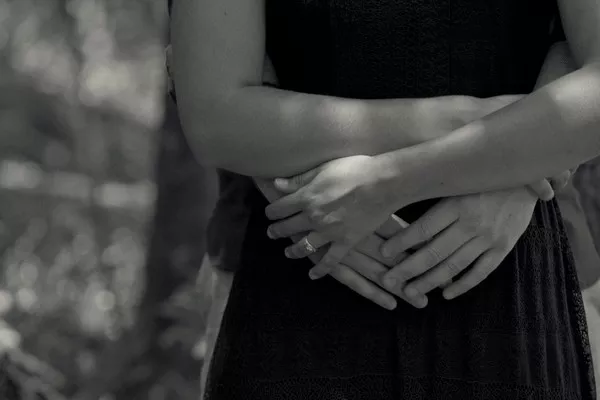The dissolution of romantic relationships is a complex and multifaceted process that can vary greatly between individuals and couples. While love is often depicted as enduring and timeless, the reality is that feelings of affection and attachment can fluctuate over time, leading to the phenomenon commonly referred to as falling out of love. In this article, we delve into the intricacies of romantic disengagement and explore whether there are discernible gender differences in the speed and intensity at which individuals fall out of love.
Understanding the Nature of Romantic Attachment: The Ebb and Flow of Affection
Romantic love is characterized by a myriad of emotions, including passion, intimacy, and commitment, which contribute to a deep sense of attachment and connection between partners. However, the intensity of these feelings can wax and wane over time, influenced by various factors such as compatibility, communication, life circumstances, and individual differences. While some relationships withstand the test of time and maintain a strong and enduring bond, others may experience a gradual or sudden decline in romantic attachment, leading to feelings of disengagement and disillusionment. Understanding the dynamics of romantic attachment is essential for exploring gender differences in falling out of love and shedding light on the underlying factors that contribute to relationship dissolution.
The Myth of Gendered Emotional Responses: Challenging Stereotypes and Assumptions
One common misconception about falling out of love is the belief that one gender is more prone to emotional detachment or disengagement than the other. However, research suggests that the experience of romantic disengagement is not inherently gendered and can vary widely between individuals regardless of their gender identity. While societal norms and cultural expectations may influence how men and women express and process their emotions, there is no definitive evidence to suggest that one gender falls out of love faster or more frequently than the other. Rather, the speed and intensity of falling out of love are influenced by a complex interplay of individual, relational, and contextual factors that transcend gender stereotypes and generalizations.
Individual Factors: Exploring Personal Traits and Emotional Resilience
Individual differences play a significant role in shaping how individuals experience and navigate romantic relationships. Factors such as personality traits, attachment styles, and emotional resilience can influence an individual’s propensity to fall out of love and their ability to cope with relationship challenges. While some individuals may be more emotionally resilient and adaptable, others may be more susceptible to feelings of disillusionment and disengagement in response to relationship stressors or conflicts. It is essential to recognize that falling out of love is a highly individualized and subjective experience that is influenced by a multitude of factors beyond gender alone.
Relational Dynamics: Examining Communication and Compatibility
The quality of communication and compatibility between partners is another critical factor that can impact the speed and intensity of falling out of love. Effective communication, mutual respect, and shared values are essential ingredients for maintaining a strong and healthy relationship. Couples who are able to communicate openly and honestly, resolve conflicts constructively, and cultivate a sense of partnership and teamwork are more likely to sustain their romantic bond over time. Conversely, relationships characterized by poor communication, conflict avoidance, or fundamental differences in values and goals may be more susceptible to falling out of love.
Life Circumstances: Navigating Transitions and Challenges
Life circumstances and external stressors can also influence the dynamics of romantic attachment and contribute to feelings of disengagement or disillusionment. Major life transitions such as career changes, relocation, financial strain, or parenthood can place significant strain on a relationship and impact the emotional connection between partners. Additionally, unresolved issues from past relationships, trauma, or mental health challenges can also affect an individual’s ability to fully invest in and maintain a romantic bond. It is essential for couples to navigate these challenges together with empathy, understanding, and support to preserve their love and connection.
Cultural and Societal Influences: Contextualizing Gender Norms and Expectations
Cultural and societal norms play a significant role in shaping how individuals perceive and experience romantic relationships. Gendered expectations regarding emotional expression, relational roles, and power dynamics can influence how men and women navigate the complexities of falling in and out of love. For example, traditional gender norms may pressure men to suppress their emotions and prioritize stoicism, while women may feel socialized to prioritize relational harmony and emotional caretaking. These societal expectations can impact how individuals perceive and respond to feelings of disengagement in their relationships.
Conclusion
In conclusion, falling out of love is a nuanced and multifaceted process that can vary greatly between individuals and couples. While gender may influence how individuals express and process their emotions within the context of romantic relationships, there is no definitive evidence to suggest that one gender falls out of love faster or more frequently than the other. Rather, the speed and intensity of falling out of love are influenced by a complex interplay of individual, relational, and contextual factors that transcend gender stereotypes and generalizations. By understanding the dynamics of romantic attachment and fostering effective communication, mutual respect, and emotional intimacy, couples can navigate the complexities of falling out of love with empathy, understanding, and resilience.
Related topics:



























